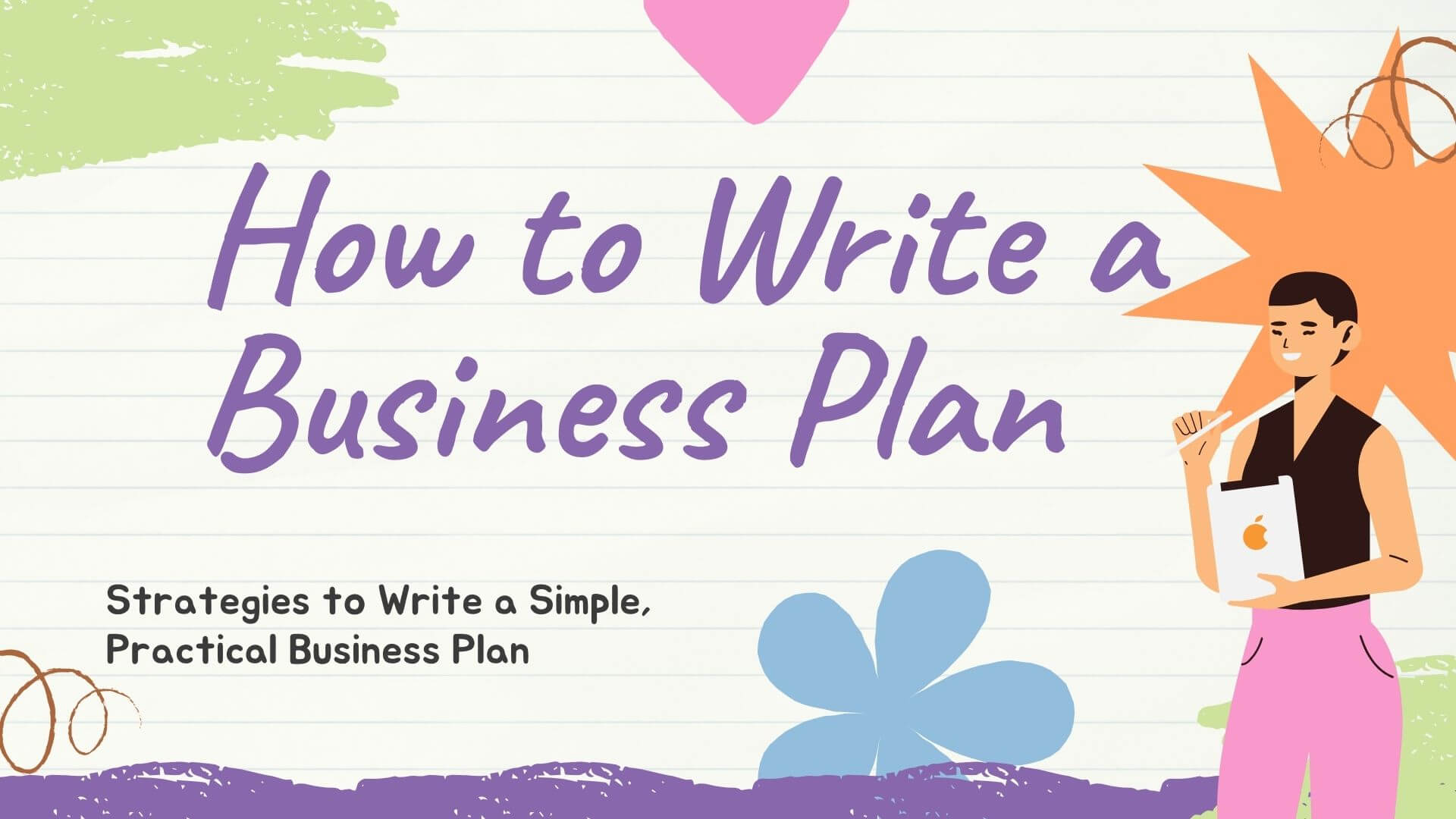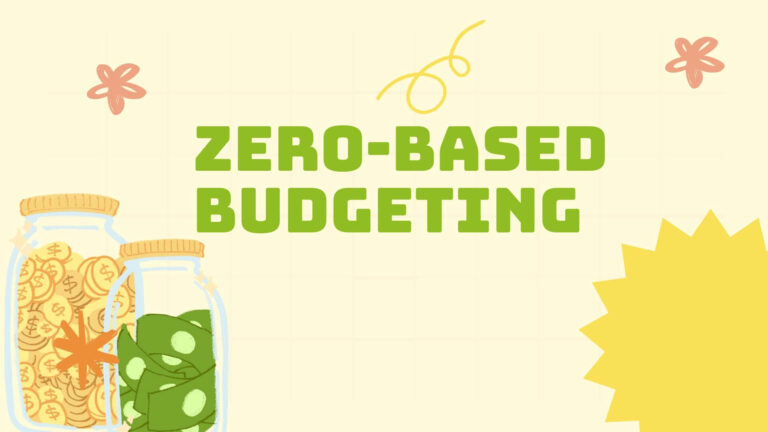How to Write a Simple, Practical Business Plan
4 years ago, I started my first business and I started with absolutely nothing.
I don’t just mean I started with no money. I started with:
- No money
- No skills
- No plans
- Barely even any ideas
Let’s just say… that was a tough way to start.
It’s tough to build something successful when you don’t even know what you’re trying to build.
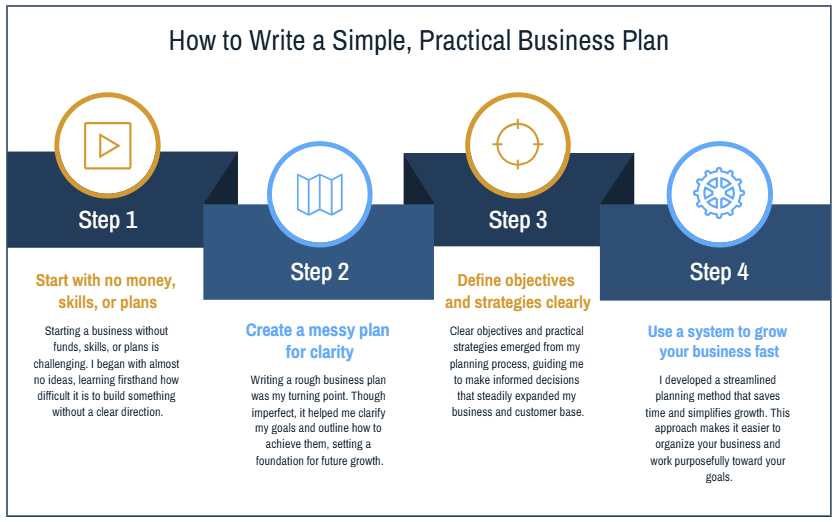
The Turning Point
After working for myself for several years, I finally got around to coming up with a plan.
It was messy. It took me forever to write. And honestly, the finished document wasn’t all that useful.
But the process of writing the plan gave me clarity about:
- My objectives for the business
- How I would reach them
Within the next two years, I had:
- More than doubled the size of my business
- Hired a staff of a dozen people
- Attracted hundreds of new customers
My Streamlined Business Plan System
Since that time, I’ve written quite a few business plans both for my own companies and for clients.
Now, I’ve developed a system that makes the process:
- Faster
- Simpler
- Way more practical and useful
If you want to organize your business, strategically increase profits, and grow toward your goals, here’s how.
The Six Pages of Your Business Plan
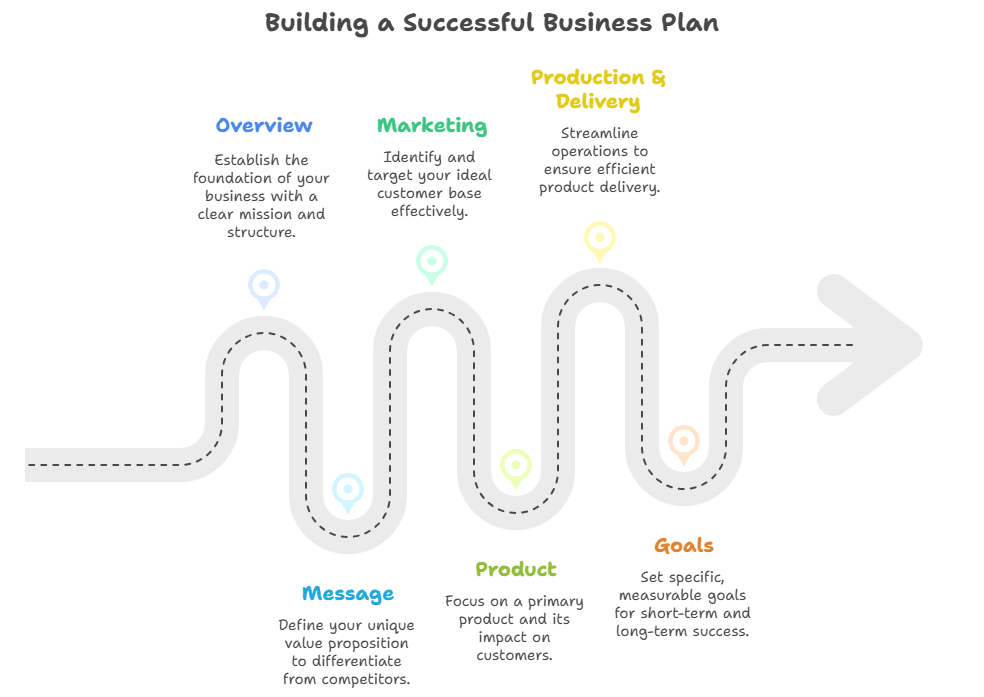
I recommend starting by scribbling ideas for each section on a separate blank page. Once you’ve worked them out, combine them into one cohesive document.
- Overview
- Message
- Marketing
- Product
- Production & Delivery
- Goals
1. Overview
Your overview gives a basic understanding of what your company does and its structure. Include:
- Your business name
- Company structure
- Location
- A brief description of what your company does
Also, add your mission — the driving force behind your business plan. If you don’t have one, it’s like trying to reach a goal without knowing what it is.
Finally, include a chart of accountability describing who is responsible for major tasks in:
- Marketing & sales
- Operations
- Finances
2. Message
Your message outlines what you communicate to customers. Ask yourself:
- What problem does your company solve?
- What result do you create?
- How do you create that result?
- Who do you serve?
- Why do you do what you do?
- Why should customers choose you over competitors?
- What’s your step-by-step process or proprietary system?
This clarity sets you apart from the competition and builds customer confidence.
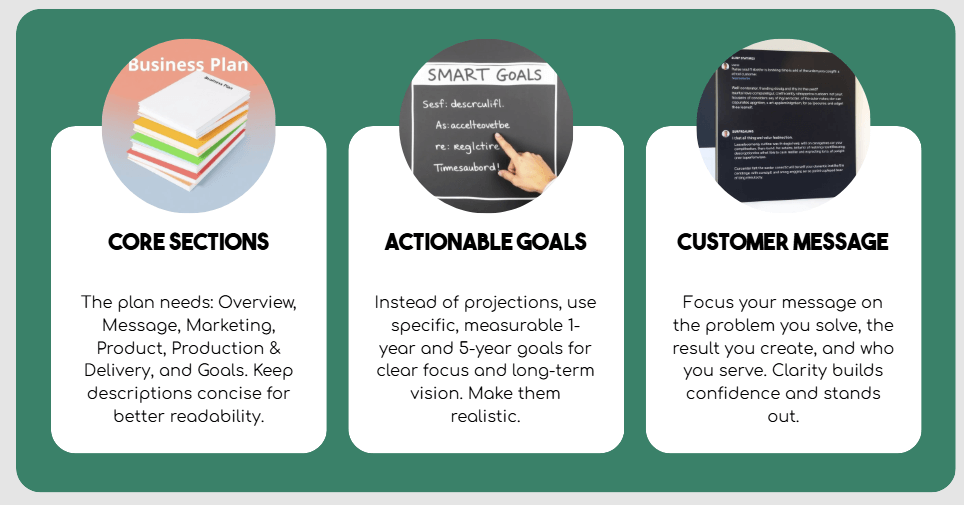
3. Marketing
Define your target market:
- Demographics: age, income, location
- Psychographics: interests, desires, fears
Also include:
- Estimated market size
- Where you can find groups of your target customers (online or offline)
If you can’t identify where they gather, you may need to refine your target market.
Add three key strategies:
- Visibility strategy – how people first discover you
- Lead generation strategy – how you collect leads
- Conversion strategy – how you turn leads into paying customers
4. Product
A “product” can be physical, digital, or a service. Choose one primary product to focus your marketing around.
For your main product, describe:
- The product itself
- The result it creates
- The impact that result has on customers’ lives
For example:
- Product: Vacuum cleaner
- Result: Clean floors
- Impact: Healthier home, more confidence inviting guests over
You can also include your secondary products with the same three details.
5. Production & Delivery
Outline how your product is produced and delivered. This ensures you have clarity on operational logistics and customer experience.
6. Goals (Not Projections)
If you’re new or have limited data, skip sales projections and instead set:
- 1-year goals (immediate focus)
- 5-year goals (long-term vision)
Possible goals include:
- Number of sales
- Total revenue
- Profit
- Customer impact (number served, reach)
- Product or company development
Make sure goals are specific, measurable, and have deadlines.
Keep It Simple
Your business plan will be most useful if it’s short and simple. A 20–40 page plan will likely never be read again. Six clear, focused pages are enough.
I’ve created a neatly organized outline you can download for free check the link in the description. Print it, schedule time to fill it out, and commit to the process.
Because until you make the time to write your business plan, your business will remain less organized and less strategic than it could be.
Final Note: Writing a business plan isn’t urgent but it can have a massive long-term impact. Make the time.

